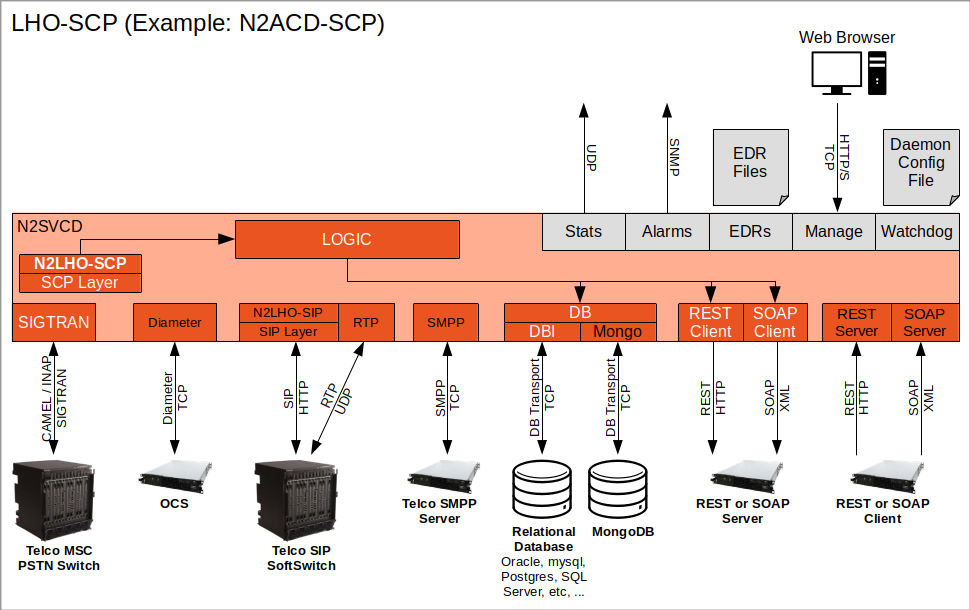N2 LHO-SCP
Overview
The LHO-SCP Application is a general-purpose component which can be used to implement many other Value Added Service (VAS) functions using the SCP call control model. For example, the N-Squared Automated Call Distribution SCP (N2ACD-SCP) service is implemented using the LHO-SCP applications.
The LHO-SCP application is responsible for handling CAMEL/INAP call-session control under the direction
of a separate logic application, typically a LogicApp application executing a Lua script.
Communication with the LogicApp is via the N2SVCD message-passing layer, using the
SCP Messages which exist for this very purpose. The LHO-SCP application
sends SCP-HANDLE-... messages to the LogicApp, which responses with SCP-DO-... messages to initiate
SCP activity such as terminations or interaction.
The LogicApp may of course use any other Lua Agents to perform tasks using other protocols. For example
it may use the RestClientApp or SoapClientApp to perform REST or SOAP client requests. Equally it
may use SMPP or Diameter, or even initiate other secondary TCAP transactions via a SigtranApp.
N2SVCD Components
When deploying the N2LHO-SCP product, the LhoScpApp (Diameter/CAMEL Gateway) application is used
in conjunction with other components as shown in the following component deployment diagram:
- Alarms and Statistics may be sent by the various applications.
- The
EdrApp,ManageApp,WatchdogAppprovide core service functions. - The
SigtranAppprovides the SIGTRAN connectivity to the signalling network (including SRF). - The
LhoScpAppcoordinates CAMEL/INAP operations into an SCP state machine. - The
LogicAppcontrols the SCP state machine via instruction messages.
The additional integrations for the LogicApp now depend entirely on the nature of the Value-Added Service
being performed by the LogicApp.
For example, if the service is performing Automated Call Distribution (i.e. “Toll-Free”) then it will typically use the following additional applications:
- The
DbAppis used to load the “Toll-Free Call Flow” from the database. - The
RestClientApporSoapClientAppmay be used to fetch additional service control information.
Other services may use DiameterApp, SMPPApp, etc.

Note that the LHO-SCP will typically use an on-switch or external Specialized Resource Function (SRF) to perform audio announcements and/or to collect DTMF input.
All interaction between the N2SCP and the SRF components is performed via the SigtranApp over an
SCTP/SIGTRAN link.
Traffic Type Determination
The traffic type is passed to the service logic in the .call_trigger attribute of the SCP-HANDLE-ALEG-IDP
message.
Refer to the LHO-SCP configuration for further details.